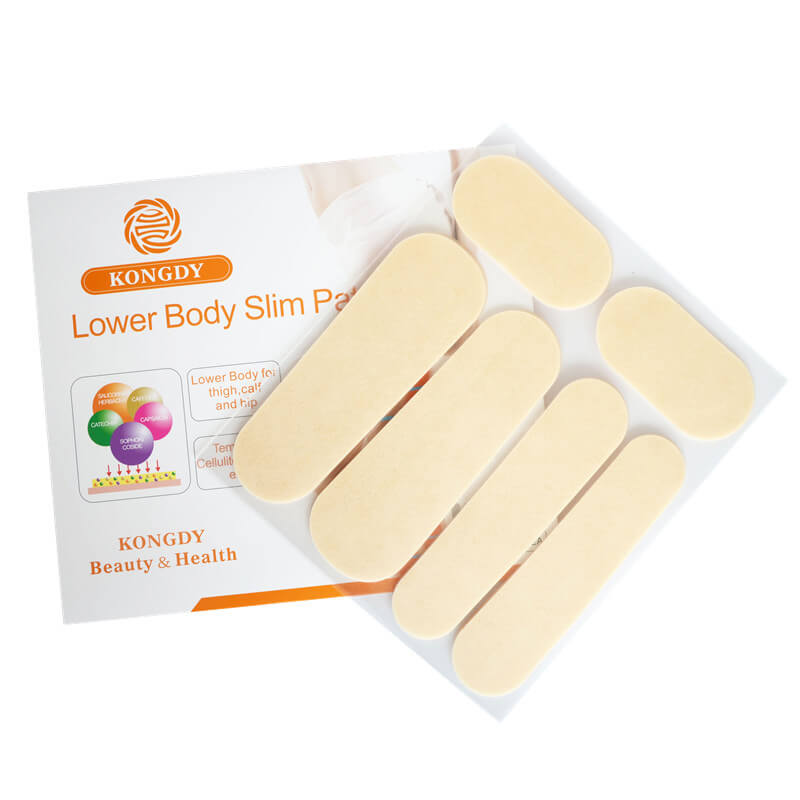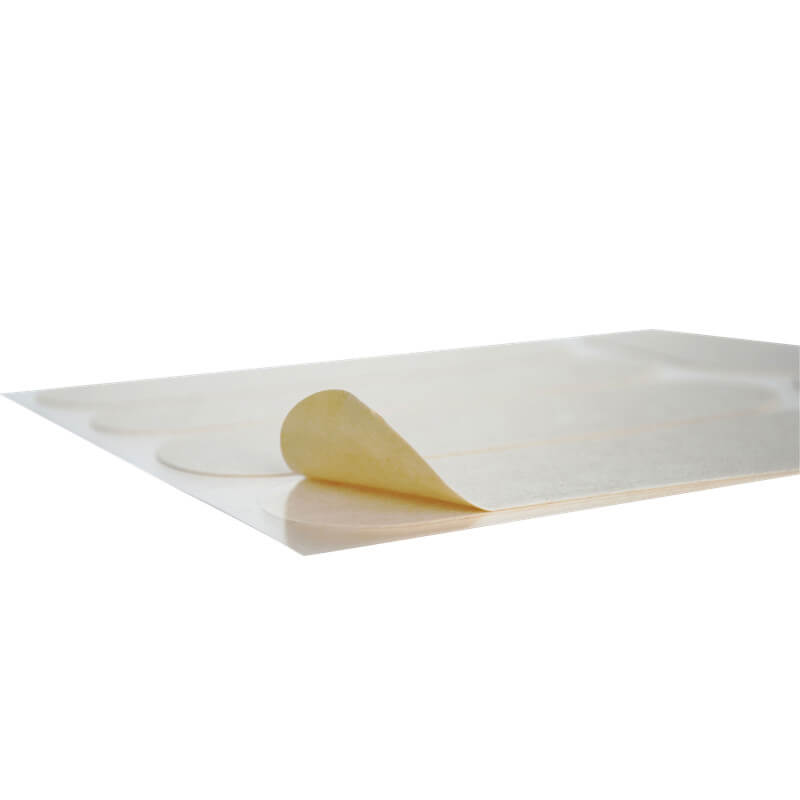Are OEM Leg Slimming Patches Safe to Use?
As the demand for non-invasive weight management solutions rises, Leg Slimming Patches have gained significant popularity. These patches promise to help reduce fat in targeted areas, offering convenience and ease of use. However, one question that consumers and brands often ask is: Are OEM leg slimming patches safe to use?
This article delves into the safety of OEM leg slimming patches, evaluating the manufacturing standards, ingredients, and regulatory guidelines involved. We will also discuss the role of the Leg Slimming Patches Manufacturer, how customization impacts safety, and what to look for when choosing a reliable Leg Slimming Patches Supplier.

1. The Role of a Leg Slimming Patches OEM in Safety
When it comes to OEM leg slimming patches, safety largely depends on the manufacturer’s processes, the ingredients used, and adherence to regulatory standards. OEMs (Original Equipment Manufacturers) are responsible for producing products that meet industry safety standards, which means that working with a reputable Leg Slimming Patches OEM is critical.
A reliable Leg Slimming Patches Manufacturer will follow strict quality control protocols, ensuring that the products are safe, effective, and compliant with relevant health regulations. These manufacturers often have in-house testing facilities to assess the safety of the patches, including skin sensitivity tests and efficacy trials.
2. Key Factors That Influence the Safety of Leg Slimming Patches
a. Quality of Ingredients
The safety of OEM leg slimming patches starts with the ingredients. Many patches contain active ingredients like caffeine, green tea extract, and L-carnitine, which are believed to promote fat breakdown and boost metabolism. However, not all ingredients are safe for everyone, and allergic reactions or skin irritations can occur if low-quality or harsh chemicals are used.
When choosing a Leg Slimming Patches Supplier, ensure they provide transparency about the ingredients used. High-quality Custom Leg Slimming Patches often feature natural and clinically tested ingredients, reducing the risk of adverse reactions.
b. Good Manufacturing Practices (GMP)
One of the main indicators of a Leg Slimming Patches Manufacturer that prioritizes safety is their adherence to Good Manufacturing Practices (GMP). GMP standards ensure that the products are consistently produced and controlled according to quality standards.
GMP certification indicates that the manufacturer uses well-maintained equipment, hygienic facilities, and trained personnel. It also ensures that the final product is free from contaminants or inconsistencies, which is vital for the safety of Private Label Leg Slimming Patches.
c. Regulatory Compliance
Before OEM leg slimming patches can be sold, they must comply with local and international regulations. In the U.S., for example, the Food and Drug Administration (FDA) oversees cosmetic and skincare products, including patches. European Union (EU) regulations are even more stringent, often requiring detailed ingredient lists and safety assessments before a product can be launched.
By partnering with a Leg Slimming Patches OEM that adheres to these regulatory frameworks, you can be confident that the patches are safe and legally compliant. A trustworthy Leg Slimming Patches Supplier will ensure that all required certifications and documentation are in place.
d. Patch Design and Adhesive Quality
The materials used in the patch itself, including the adhesive, also play a role in safety. Custom Leg Slimming Patches should be designed with hypoallergenic adhesives to prevent skin irritation or allergic reactions, especially since the patches are worn for extended periods.
Ask your OEM Leg Slimming Patches Manufacturer about the quality of the adhesive and materials used in the patches. A poor-quality adhesive can cause discomfort or even damage the skin, while high-quality patches are designed to be gentle yet effective.
e. Testing and Clinical Trials
A reputable Leg Slimming Patches OEM will conduct thorough testing before launching a product. This includes laboratory tests for toxicity, skin sensitivity, and overall safety. Some manufacturers also go a step further by conducting clinical trials to demonstrate the efficacy and safety of their Private Label Leg Slimming Patches.
For peace of mind, always inquire whether your chosen Leg Slimming Patches Manufacturer performs these tests and can provide evidence of their products’ safety.
3. Common Safety Concerns with Leg Slimming Patches
While OEM leg slimming patches are generally safe when produced by reputable manufacturers, there are some common safety concerns to be aware of.
a. Allergic Reactions
Some individuals may be allergic to specific ingredients in the slimming patches. This can lead to redness, itching, or even blistering of the skin. To avoid these reactions, choose a Leg Slimming Patches Supplier that uses hypoallergenic formulas and natural ingredients.
b. Overuse or Misuse
Even safe products can become harmful if used incorrectly. Overuse of leg slimming patches may lead to skin irritation or other side effects. It’s essential to follow the recommended usage guidelines provided by the Leg Slimming Patches OEM.
c. False Marketing Claims
Some brands may make exaggerated claims about the effectiveness of their slimming patches, which can mislead consumers. Ensure that your Private Label Leg Slimming Patches are marketed honestly, with realistic expectations set by the Leg Slimming Patches Manufacturer.
4. Choosing a Safe and Reliable Leg Slimming Patches OEM
Choosing a safe and reliable OEM Leg Slimming Patches Manufacturer is the most important step in ensuring that your patches are safe for consumer use. Here are some tips to help you select the right partner:
a. Check Certifications
Ensure the Leg Slimming Patches Manufacturer is certified by recognized regulatory bodies, such as GMP, ISO, or FDA. These certifications demonstrate the manufacturer’s commitment to quality and safety.
b. Ask for Ingredient Transparency
The best Leg Slimming Patches Suppliers will be transparent about the ingredients used in their products. Always request a detailed list of ingredients and ensure that they meet your safety standards.
c. Review Their Testing Processes
Ask the Leg Slimming Patches OEM about their testing processes. Do they conduct skin sensitivity tests? Are there clinical trials to back up the safety of the patches? A reputable manufacturer will provide this information willingly.
d. Ensure Regulatory Compliance
Verify that the Leg Slimming Patches OEM complies with local and international regulations. Compliance ensures that your Private Label Leg Slimming Patches can be sold legally and that they meet safety standards.
e. Check for Positive Reviews and References
Finally, look for reviews or ask for references from other businesses that have worked with the Leg Slimming Patches Supplier. A positive track record is a good indicator of the manufacturer’s reliability and commitment to safety.
5. Benefits of Working with a Trusted Leg Slimming Patches OEM
Partnering with a reliable Leg Slimming Patches OEM ensures not only the safety of your product but also its success in the market. Here are some benefits:
a. Consumer Trust
By offering safe and effective Custom Leg Slimming Patches, you build trust with your customers. Consumers are more likely to purchase and recommend products they feel confident using.
b. Regulatory Confidence
Working with a compliant Leg Slimming Patches Supplier ensures that your product meets all legal requirements, protecting your business from potential legal issues or recalls.
c. Long-term Brand Success
Safe, high-quality Private Label Leg Slimming Patches lead to positive reviews, repeat customers, and long-term success for your brand.
6. Conclusion
So, are OEM leg slimming patches safe to use? The answer is yes, as long as they are manufactured by a reputable Leg Slimming Patches OEM that prioritizes quality, safety, and compliance. The right Leg Slimming Patches Manufacturer will use high-quality ingredients, adhere to strict manufacturing standards, and comply with all relevant regulations to ensure your patches are both safe and effective.
By carefully selecting your Leg Slimming Patches Supplier, conducting proper due diligence, and choosing a manufacturer with a strong track record, you can confidently offer a safe product to your customers.
Related Questions
What ingredients are typically used in leg slimming patches?
- Common ingredients include caffeine, green tea extract, and L-carnitine, which are known to promote fat burning and improve circulation.
How long can I wear a leg slimming patch?
- Most patches are designed to be worn for 8 to 12 hours, but always follow the specific instructions provided by the manufacturer.
Are leg slimming patches FDA-approved?
- Slimming patches are classified as cosmetics and are not usually subject to FDA approval, but they must meet safety standards for cosmetic products.
Can I customize the formula of my leg slimming patches?
- Yes, working with an OEM Leg Slimming Patches Manufacturer allows you to customize the ingredients and design to fit your brand’s needs.
What should I do if I have an allergic reaction to a slimming patch?
- If you experience redness, itching, or discomfort, remove the patch immediately and consult a healthcare professional. Always do a patch test before extended use.






